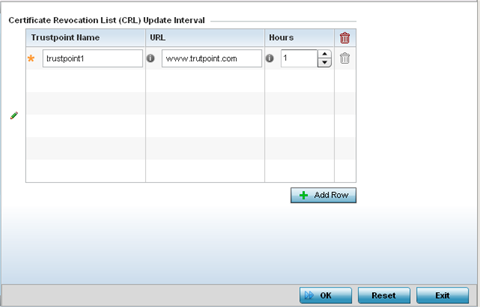Override Certificate Revocation List (CRL) Configuration
About this task
A certificate revocation list (CRL) is a list of revoked certificates that are no longer valid. A certificate can be revoked if the certificate authority (CA) has improperly issued a certificate, or if a private key is compromised. The most common reason for revocation is that the user is no longer in sole possession of the private key.
To define a certificate revocation configuration or override:



